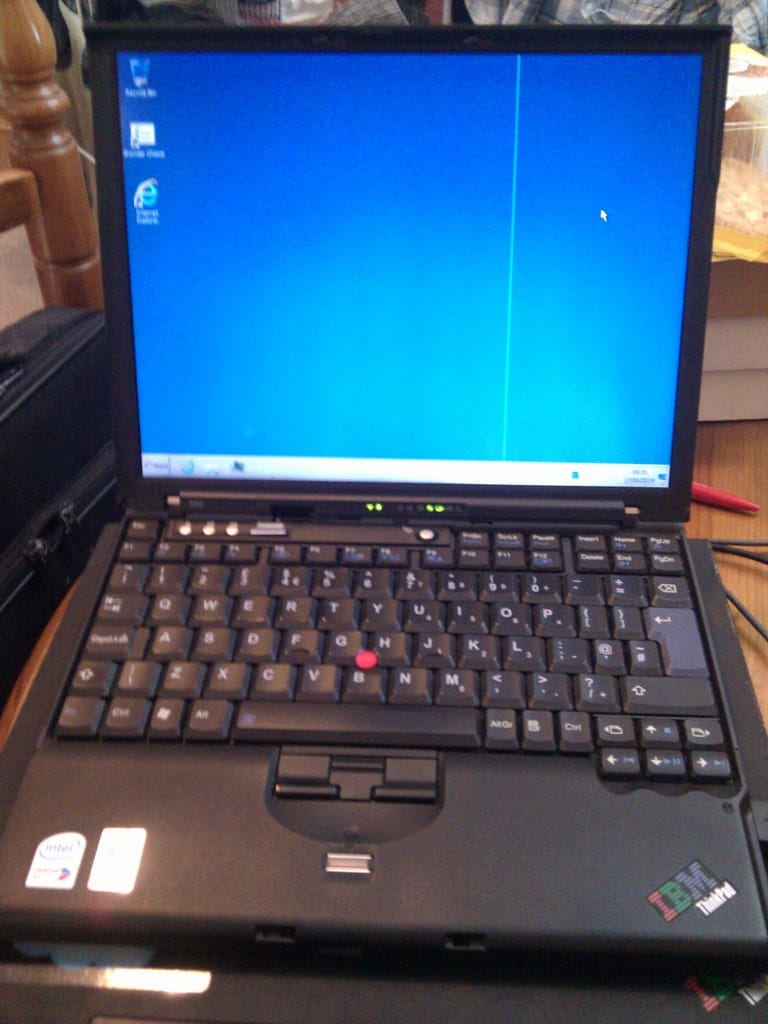The Brilliant Butterfly: How IBM's Revolutionary Keyboard Design Became Tech History's Most Beautiful Failure
In the annals of laptop innovation, few devices capture the imagination quite like IBM's ThinkPad 701c—affectionately known as the "Butterfly" for its remarkable sliding keyboard that expanded beyond the laptop's frame when opened. Despite being hailed as an engineering marvel and winning numerous design awards, this groundbreaking machine disappeared from the market just two years after its 1995 debut. The story of the ThinkPad 701's rise and fall reveals why sometimes the most ingenious solutions can't overcome the relentless march of technological progress.
The Problem That Sparked Innovation
In the early 1990s, laptop manufacturers faced a fundamental design challenge: how to fit a full-sized, comfortable keyboard into an increasingly compact form factor. As laptops became more portable, screens grew smaller, and the available space for keyboards shrank accordingly. This created an uncomfortable typing experience that frustrated users accustomed to desktop keyboards.
IBM's solution was nothing short of revolutionary. The ThinkPad 701 featured a keyboard that literally expanded when the laptop was opened. Through an intricate mechanical system, the keyboard's two halves would slide outward on rails, extending beyond the laptop's base to provide a full 12.2-inch typing surface—despite the machine itself being only 9.5 inches wide when closed.
Engineering Marvel Meets Market Reality
The butterfly mechanism was a testament to IBM's engineering prowess. The keyboard consisted of multiple interlocking pieces that moved in perfect synchronization when the lid was raised. Each key was individually spring-loaded and connected to a complex system of rails, levers, and pivots that transformed the compact keyboard into a full-sized typing surface in seconds.
The innovation didn't go unnoticed. The ThinkPad 701c won the prestigious Industrial Design Excellence Award and was featured in New York's Museum of Modern Art. Technology journalists praised its clever solution to the space constraints plaguing portable computers.
However, the beautiful engineering came with significant drawbacks. The complex mechanical system added weight, increased manufacturing costs, and created multiple potential failure points. The sliding mechanism was also fragile—one wrong move could jam or break the delicate rails, rendering the laptop unusable.
The Technology Shift That Changed Everything
The ThinkPad 701's fate was ultimately sealed not by its design flaws, but by rapid advances in LCD technology. When IBM introduced the laptop in 1995, most portable computers featured 10.4-inch screens. The butterfly keyboard made perfect sense in this constrained environment.
But LCD technology was evolving at breakneck speed. By late 1995 and early 1996, manufacturers began widely adopting 12.1-inch screens, and larger displays quickly became the standard. Suddenly, laptop bases could accommodate full-sized keyboards without any mechanical trickery. The ThinkPad 701's ingenious solution had been rendered obsolete by the very problem it was designed to solve.
Market Performance and Legacy
Despite its innovative design, the ThinkPad 701 struggled commercially. IBM sold approximately 25,000 units during its brief production run—respectable for a niche product, but insufficient for mass market success. The laptop's premium price point, combined with its mechanical complexity and the emergence of larger-screen alternatives, limited its appeal.
Professional reviewers consistently praised the typing experience but noted concerns about long-term reliability. Corporate buyers, IBM's primary market, were hesitant to invest in a design that seemed more experimental than proven.
Lessons from the Butterfly
The ThinkPad 701c represents a fascinating case study in innovation timing. IBM created an elegant solution to a real problem, executed it brilliantly, and earned critical acclaim—yet still failed in the marketplace. The butterfly keyboard demonstrates that even perfect engineering can't overcome shifting technological landscapes.
The laptop also illustrates the challenge of over-engineering solutions. While the sliding keyboard worked beautifully when functional, its complexity created more problems than it solved once simpler alternatives became available.
Today, the ThinkPad 701c exists as a beloved collector's item and a reminder of an era when laptop manufacturers were willing to take bold risks on unconventional designs. It stands as proof that sometimes the most innovative ideas are simply ahead of their time—or perfectly timed for a moment that passes too quickly.
In our current age of increasingly uniform laptop designs, the butterfly keyboard serves as an inspiring example of what's possible when engineers dare to think differently, even if the market isn't quite ready to follow.
